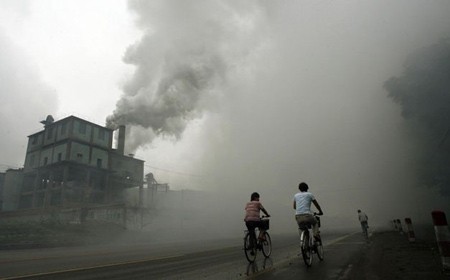2 months by cncdivi
Recently, I came across an article written by Gilbert Kaplan discussing the opposing forces against manufacturing in Washington and the struggle to support the manufacturing sector here. Gilbert, a former officer in the US Department of Commerce, declares without hesitation that there are indeed powerful forces working against manufacturing in Washington. Conveniently, he identifies five constituents that appear reasonable at first glance:
1. Those US companies that view offshoring as part of a major competitive advantage. He gives an excellent description:
First, we have the people who are making big money by moving manufacturing off-shore. This includes some retailers that make no bones about buying everything from the lowest price source possible, even if that means closing down U.S. plants and buying from producers that ignore even rudimentary environmental and labor laws. It also includes major U.S. multinationals that find it in their interests to move U.S. jobs abroad because of lower wages and because many foreign countries will give them big subsidies to abandon their U.S. roots and obligations.
2. Those who believe in free trade, without restriction. What I find most amazing about this camp is their willingness to push for free trade unilaterally, even when we’re being taken to the cleaners in various not-so-free ways such as currency manipulation.
3. Those who believe foreign policy is more important than Manufacturing. So, if we take any position against a trading partner in favor of Manufacturing, obviously that trading partner will be unhappy and this audience thinks we have to appease them. I don’t know of a country more generous than the US in terms of giving away foreign aid, so you’ll excuse me if I can’t take this crowd too seriously. Yet, they do act in their own self-interest to preserve their fiefdoms and so are part of the problem.
4. Those who are part of international bureaucracies that regulate trade, such as the WTO. He gives a particularly damning example of the WTO’s activites:
Most recently the WTO, in a truly astounding decision, said that even when a company in China is owned by the Chinese government that does not mean the company is following the directives of the Chinese government in terms of subsidizing or assisting its customers. A rudimentary knowledge of the Chinese Communist system shows the fallacies in this thinking; a more thorough knowledge shows it is totally absurd.
5. Lastly, many conventional economists have long argued that there is no reason to have manufacturing in the U.S. It is just as good to have service jobs, they say. But that argument, at its root, makes no sense. Service jobs do not spin off other jobs to nearly the same extent that a major manufacturing plant does. They are also generally lower paid, and they don’t spawn critical innovation and research and development.
Clearly, there are large and powerful lobbies in the Washington that are going to do nothing to help US Manufacturing. Quite the opposite, in fact.
I think it’s important to be aware of what they’re doing, to expose their fallacies, and perhaps most important, to provide the public with as many reasons to believe in Manufacturing as we can. Those of us in the Industry understand why it’s important at such a visceral level that I’m not sure we always give those outside the best reasons that they can understand and carry the message forward with.
This brings me to the title of my article. Whether you believe that Global Warming is a problem or not, there are a very large number of people who do. Interestingly, this has a bearing on Manufacturing. It turns out that if you’d like to do something about Global Warming, one of the best things you can do is to be aware of the carbon footprint needed to manufacture the products you buy. Oh, I’m not talking about great detail here–it’s adequate to understand at a country by country level.
For example. Suppose you’re looking to spend $1 on something, and you have a choice between a Chinese-made product and an American-made product. How can you decide which is better from a Global Warming standpoint?
The answer turns out to be pretty simple. We can simply compare the carbon footprint by country of producing $1 in GDP. That information is available on Wikipedia and in a number of other places. Here are some excerpts:
– US produces $2291 per ton of carbon dioxide emissions
– China produces $435 per ton of carbon dioxide emissions
So, the use is about 5X more efficient at limiting carbon dioxide emissions as China. On average, if you spend your $1 on US goods, you’re going to save 5X the pollution. At the same time, you’re helping to create jobs in the US.
One often hears dire predictions about Global Warming, but it is very seldom that one hears of something they personally could do about it. Help get the word out. Telling this story has been my stock response whenever I happen upon a Global Warming conversation.
Like what you read on CNCCookbook?
Join 100,000+ CNC'ers! Get our latest blog posts delivered straight to your email inbox once a week for free. Plus, we’ll give you access to some great CNC reference materials including:
- Our Big List of over 200 CNC Tips and Techniques
- Our Free GCode Programming Basics Course
- And more!
Just enter your name and email address below:
100% Privacy: We will never Spam you!

Bob is responsible for the development and implementation of the popular G-Wizard CNC Software. Bob is also the founder of CNCCookbook, the largest CNC-related blog on the Internet.







Hi Bob,
We have the exact same attitude here in Austrealia! Our bloody useless stupid basically Communist Government which has been the worst in our history, has wasted so much money, on half baked stupidity, and the incompetence is just awesome. Howevrer, come September 14 this year, I believe they will be swept down the sewer of history!!!
Yes, we all purchase Chinese products from our local Hardware store, or other retail place. But, when it comes to the absolutely treasonous activities of our Governments, and the looming disasters that are coming, by increasing unemployment, and weakening of our strategic capacity and ability, then that needs to be seriously addressed.
I stepped down from the Chair of the Sydney Chapter 144 of the Society of Manufacturing Engineers last December, being I think my sixth term as chapter chairman in the last thirty years. The Sydney Chapter was the first offshore one created with the blessing of The Headquarters in Dearborn.. It has been the smartest thing I have done, joining back in 1977. These days though we are seeing as serious decline in membership, the same as I believe is happening in the USA. When our dubious politicians come to the realisation that they have, along with other shortsighted greedy traitors, sold us out to nations who in reality are not our friends, it may well be far too late to recover.
Yes, this vast unimaginable fraud called global warming and carbon dioxide which is not a pollutant but of vital need to plants etc., is a very convenient to that old spiv, Al Gore, and his bloody inconvenient pack of lies! Note that the proponents of this rubbish never mention the many crucial elements of the sun and its variations, and the importance of Sunspots.
Let me tell you, Bob, the great majority of Australians hold the USA in the highest possible regard and am eternally greatful, that FDR came to our rescue in the dark days of the early 1940’s, not only in military numbers, but in supplying vast quantities of military hardware, Aircraft, machine tools, materials and what all else. That is why we are always quick to stand when we hear your Anthem.
My friend, we all have huge problems facing us, along with other nations such as England and Canada. I have long been a student of Engineering history, and how things were achieved over the last few hundred years. One of the most profoundly awesome chapters is centered on what the USA achieved during those ghastly years of WW2. The records set for production, and design and development of all things military, could never ever be equalled, notwithstanding all the clever fancy toys we have today. I always get a sense of smug satisfaction, when some learned wide eyed practioneer of state of the art Bullshit, spouts off about Lean manufacturing, and all and sundry witchcraft of the 21St. century, I love raising historical facts about how you guys could just lay down a Green Field site factory of enormous size, and within maybe six months, there were two or three rows of B-17’s, B-24s, or the famous P-51 Mustang; the prototype of which flew I think 120 days after the go ahead was given. or i4 and 18 cylinder Radials would be streaming off the lines, yet the roof hadn’t been finished in numerous cases.
Having been in Ham Radio since the early 1960’s, and a keen collector of WW2 Airborne radio gear, the exquisite quality of this equipment is incredible!
Uncle Sam also knew how to write fantastic technical manuals, to a strictly enforced protocol, and you wouldn’t find better manuals and servicing instructions anywhere!
Some few weeks ago you wrote an interesting article, soundly decrying the fact that many large special projects were being outsourced to anywhere in rhe world, based on the cheapest price. Yes, I sort of agree with much of that, but there were aspects that were a little harsh. We have now just reached 23 million people, so you can understand that the Aerospace (LoL!) How I loathe that ponced up crappy description! The Aircraft industry, is not overly large down here, but I think it fair to say, that we are pretty good in these areas, and I guess that we would certainly not be destabilising your industry price wise. Australia has loing been a major supplier to Boeing , Lockheed and Douglas, when it existed. We have been a consistently long time, fairly large purchaser of these aircraft, and many other large dollar defence and naval equipment, so I think it fair that we do have a slice of the cut loaf to help offset the purchases. There would be no realistic possibility that we would harm your industry.
Remember, that we have had a good reputation in building aircraft in the dim past, from Mustangs, F-86 Sabres, which were cionsidered the best of type, because of the Rolls Royce Avon Engine, which we also manufactured. We also made P&W 1830 and I think many major components of the 2000 series as used in the Caribou, which Australia has only recently pensioned off. and RR Merlins. Australia has also built Canberra jet bombers, and Mirage fighters and four engine Avro Lincolns.
Where things go pear shaped, is when we are suddenly dealing with countries like China, where there is no possibility of competing financially. This strange new game of free trade agreements and level playing fields, leaves me rather open mouthed. That is enough of my diatribe for one E mail. Has the cat reached its orbital height yet?
Regards
Stephen
I had joined a conversation earlier today about manufacturing in the US that was similar to this, though not so much on the global warming aspect. I ran across an article back in December in the Atlantic that talked about how more companies are finding rising fuel costs, as well as the risk of innovative products basically being “lifted” by overseas competitors (among other reasons) as a motivator to “insource” manufacturing back to our shores. The article used GE as the example.
You can find it here: http://www.theatlantic.com/magazine/archive/2012/12/the-insourcing-boom/309166/
I wonder what others thoughts are on this? Overly optimistic fluff or a sign of possible better things to come?
I have to write an aplaud not only the article in question above but the 2 comments, so far. As well, I would make one comment on Bob’s behalf and that is: I believe when he’s speaking about overseas partnerships vs. “idiotsourcing” he’s not referring to the regulated and cooperative non-thirdworld style governments, but more those countries that will do anything to put their agenda over other customer countries and the world as a whole. They say the US is money hungry~! The gov’ts as found in vietnam, china, india, etc. are unfortunately doing what our “leaders” want. Our leaders hide behind …. actually, not hiding very well, are they? They’ve become immune through the protections afforded by a skyrocketing income. They, the politicians, banksters, corporate shills; are all just like the criminalist countries forwarding unfair trade and monetary policies back on the US, (really, not the whole US, just those of us not in the top 1% of wage earners). Thanks for the great artcle, Mr.Warfield, and the segacious comments from your devoted readers.
Hi Bob,
Thanks for your blog – I always enjoy your comments.
While I agree with Stephen Kuhl on the state of manufacturing, I find myself compelled to comment on his stance regarding climate change – in that it is not anthropogenic, but can be explained say by sunspots or some other natural cause. This is simply incorrect. What I find astounding is that people seem to think they are quailed to comment on subjects they have no training or qualification in and totally disregard those that do. If it were just a few climate scientists, or even 50% of them, that espoused anthropogenic climate change, then we may well feel that there is something to argue about. But it is 99.9999% of climate scientists who agree that climate change is anthropogenic. Oh – wee did not think about sunspots (or volcanos or sun cycles or whatever)! – seriously Stephen?
Natural climate cycles have been considered by scientists. The text below I lifted from http://www.skepticalscience.com/Could-global-warming-be-caused-by-natural-cycles.html and I think gives a reasonable overview of this. PLEASE go there and have a read. Note the finishing comment “As we can see, “it’s just a natural cycle” isn’t just a cop-out argument – it’s something that scientists have considered, studied, and ruled out long before you and I even knew what global warming was.”
The point is, it is not simple. We as lay people simply cannot argue “I think”, because frankly we are not qualified “to think” about this about this. We MUST accept that the people that are qualified to think about it – those that have spent 5 years at university gaining a degree followed by another 3 years getting a doctorate, who constantly review the scientific literature, and AS A GROUP OVERWHELMINGLY SUPPORT the science of climate change. There are always opposing views in science, but they must stand up to peer review. That is the scientific process. If the science opposing anthropogenic climate change stood up to peer review, it would accepted sooner or later.
Climate change has been turned into a political argument. It seems that if you believe in anthropogenic climate change you are a red liberal and if you don’t you are a red-neck republican. This I think has been fostered by those that stand to lose and gain from any change in policy.
If you would really like to follow the scientific literature without having to subscribe to an expensive scientific publication, you can access pre-prints at ttp://arxiv.org For example, here (http://arxiv.org/ftp/arxiv/papers/1211/1211.4846.pdf) is a recent paper describing what could happen if all fossil fuel reserves were used – we would essentially destroy the planet and make it uninhabitable.
Sorry to turn you blog into a climate change debate Bob.
Cheers guys
Bob Miller
Could global warming be caused by natural cycles?
Posted on 11 January 2011 by climatesight
“What if global warming is just a natural cycle?” This argument is, perhaps, one of the most common raised by the average person, rather than someone who makes a career out of denying climate change. Cyclical variations in climate are well-known to the public; we all studied the ice ages in school. However, climate isn’t inherently cyclical.
A common misunderstanding of the climate system characterizes it like a pendulum. The planet will warm up to “cancel out” a previous period of cooling, spurred by some internal equilibrium. This view of the climate is incorrect. Internal variability will move energy between the ocean and the atmosphere, causing short-term warming and cooling of the surface in events such as El Nino and La Nina, and longer-term changes when similar cycles operate on decadal scales. However, internal forces do not cause climate change. Appreciable changes in climate are the result of changes in the energy balance of the Earth, which requires “external” forcings, such as changes in solar output, albedo, and atmospheric greenhouse gases. These forcings can be cyclical, as they are in the ice ages, but they can come in different shapes entirely.
For this reason, “it’s just a natural cycle” is a bit of a cop-out argument. The Earth doesn’t warm up because it feels like it. It warms up because something forces it to. Scientists keep track of natural forcings, but the observed warming of the planet over the second half of the 20th century can only be explained by adding in anthropogenicradiative forcings, namely increases in greenhouse gases such as carbon dioxide.
Of course, it’s always possible that some natural cycle exists, unknown to scientists and their instruments, that is currently causing the planet to warm. There’s always a chance that we could be totally wrong. This omnipresent fact of science is called irreducible uncertainty, because it can never be entirely eliminated. However, it’s very unlikely that such a cycle exists.
Firstly, the hypothetical natural cycle would have to explain the observed “fingerprints” of greenhouse gas-induced warming. Even if, for the sake of argument, we were to discount the direct measurements showing an increased greenhouse effect, other lines of evidence point to anthropogenic causes. For example, the troposphere (the lowest part of the atmosphere) is warming, but the levels above, from the stratosphere up, are cooling, as less radiation is escaping out to space. This rules out cycles related to the Sun, as solar influences would warm the entire atmosphere in a uniform fashion. The only explanation that makes sense is greenhouse gases.
What about an internal cycle, perhaps from volcanoes or the ocean, that releases massive amounts of greenhouse gases? This wouldn’t make sense either, not only because scientists keep track of volcanic and oceanic emissions of CO2 and know that they are small compared to anthropogenic emissions, but also because CO2 from fossil fuels has its own fingerprints. Its isotopic signature is depleted in the carbon-13 isotope, which explains why the atmospheric ratio of carbon-12 to carbon-13 has been going down as anthropogenic carbon dioxide goes up. Additionally, atmospheric oxygen (O2) is decreasing at the same rate that CO2 is increasing, because oxygen is consumed when fossil fuels combust.
A natural cycle that fits all these fingerprints is nearly unfathomable. However, that’s not all the cycle would have to explain. It would also have to tell us why anthropogenic greenhouse gases are not having an effect. Either a century of basic physics and chemistry studying the radiative properties of greenhouse gases would have to be proven wrong, or the natural cycle would have to be unbelievably complex to prevent such dramatic anthropogenic emissions from warming the planet.
It is indeed possible that multidecadal climate variability, especially cycles originating in the Atlantic, could be contributing to recent warming, particularly in the Arctic. However, the amplitude of the cycles simply can’t explain the observed temperature change. Internal variability has always been superimposed on top of global surface temperature trends, but the magnitude – as well as the fingerprints – of current warming clearly indicates that anthropogenic greenhouse gases are the dominant factor.
Despite all these lines of evidence, many known climatic cycles are often trumpeted to be the real cause, on the Internet and in the media. Many of these cycles have been debunked on Skeptical Science, and all of them either aren’t in the warming phases, don’t fit the fingerprints, or both.
For example, we are warming far too fast to be coming out of the last ice age, and the Milankovitch cycles that drive glaciation show that we should be, in fact, very slowly going into a new ice age (but anthropogenic warming is virtually certain to offset that influence).
The “1500-year cycle” that S. Fred Singer attributes warming to is, in fact, a change in distribution of thermal energy between the poles, not a net increase in global temperature, which is what we observe now.
The Little Ice Age following the Medieval Warm Period ended due to a slight increase in solar output (changes in both thermohaline circulation and volcanic activity also contributed), but that increase has since reversed, and global temperature and solar activity are now going in opposite directions. This also explains why the 11-year solar cycle could not be causing global warming.
ENSO (El Nino Southern Oscillation) and PDO (Pacific Decadal Oscillation) help to explain short-term variations, but have no long-term trend, warming or otherwise. Additionally, these cycles simply move thermal energy between the ocean and the atmosphere, and do not change the energy balance of the Earth.
As we can see, “it’s just a natural cycle” isn’t just a cop-out argument – it’s something that scientists have considered, studied, and ruled out long before you and I even knew what global warming was.
I’ll approve this one to have one from each perspective, but let’s not turn it into a climate change debate (meaning I’ll block any more on that topic).
The nice thing about the point of the post is that whether you want to help the domestic economy or help the environment, one of the very best ways to do both is to quit buying goods from countries that are heavy polluters.
In short, you don’t really have to agree on whether there is global warming, but those that think there is, this is about the most compelling thing you can do about it I have yet come across, and very few people seem to think about it in these terms.
This sort of thing is why I’m shocked when organizations like Make Magazine are promoting outsourcing to China. They constantly run Green articles, but if they really grasped how things work they couldn’t reconcile the outsourcing with the pollution impact.
You can’t compare the CO2/GDP ratio without controlling for the difference in how we produce GDP in the first place. Selling iPhones is a lot less carbon-intensive and higher-margin for Apple than making them is for Foxconn.
Colin it’s an interesting observation, so let’s dig into the numbers and see if it changes the picture:
81% of carbon emissions are due to Energy (33%), Transportation (28%), and Manufacturing (20%).
We’re about exactly on par with China in terms of Energy % of GDP, so iPhones or no iPhones, that part of the budget is comparable, so the argument still holds.
We have about 1/2 the Manufacturing % of GDP vs China, so if that accounts for a 5X disparity in carbon, at best that gets the Chinese to more like 2.5X of just this portion of the carbon budget and the argument still holds.
As for Transportation, US transportation and logistics is about 13% of GDP and China is 23%. Same story as Manufacturing.
If we multiply these numbers through to reflect that the US does less GDP in the carbon producing sectors, we’re left to conclude that even adjusted, China is 3.3X worse instead of 5X.
That’s another way of saying that the so-called service economy, while large, is not large enough to account for a 5X disparity in carbon footprint. Not even close. Worse, if you’re going to manufacture goods overseas and transport them, you’re going to contribute even more carbon that isn’t being charged to the Chinese as these numbers reflect charging to whomever owns the ships.
Unfortunately, most buyers are concerned more about price than they are about Global Warming.
In the second to the last paragraph I think you meant USA but instead use worked its way into the text.
Beyond all of the items you highlighted you missed a couple of important issues, that is environmentalist and the lazy. The environment is important don’t get me wrong but environmental protection has to be rational.
The bigger issue that many manufactures face is the lazy, in some locations simply finding people willing to actually work is very difficult and sadly that isn’t a problem in some of the foreign countries referenced. We won’t be able to successfully turn around manufacturing until we address the welfare system. It has gotten so bad that it may actually take a revolution to bring about the change required. A few people starving to death might actually motivate some of the welfare crowd to actually become productive. To that end we need a matra where no work is equivalent to no welfare for the able bodied.
David,
I think there is a chick/egg problem here. Many manufacturers have stopped training apprentices in the interest of short-term profit – why train apprentices at home when you are manufacturing in Asia? As the older workforce are retrenched and their skills are lost, there is no one left to train the young. Many of the more unskilled jobs in manufacturing have now been automated as well. The only alternative for many of the young is to enter the service sector. But how many can the service sector absorb? Could we possibly all live lives servicing each other? There has to reach a point of saturation. Those that are left have no alternative but to accept menial jobs or benefits. It is a very sad situation and I am glad I am not coming out of high school now. Yes we do need some sort of revolution, but hardly people starving to death. We need a massive change in the mind-set by our (so called) leaders and company top brass away from short term returns for shareholders, and to extend their thinking to the long term. The trouble is that the share market only looks for short term returns and executives/shareholders are quite prepared to sacrifice our future and that of the companies that they lead for a few years for their own short term benefit – let the next guy or generation pick up the pieces.
Frankly, the whole premise of free trade is absurd. How can trade be “free” when people in Asia can live on 1/10 the income we can in Australia or the US. In Australia, we have “457 visas” where companies can import cheap labour from Asia. These workers stay in Australia for 3 months so they don’t earn enough income to be taxed. They then return (to come back next year) with what at their home is a massive wad of money – the equivalent of several years income. They are replaced with the next batch every 3 months. The young, and even the not so young skilled workers here are left out – unemployed – on benefit! Insanity!
I do not believe most people on benefit really want to be there – the benefit is just too low and life is just too miserable (there are exceptions of course – the professionals who stack their benefits by having huge families and turning welfare into a profession). The young people I meet want to work – there are simply not the jobs for the reasons I outlined above (and others).
Cheers
Bob Miller